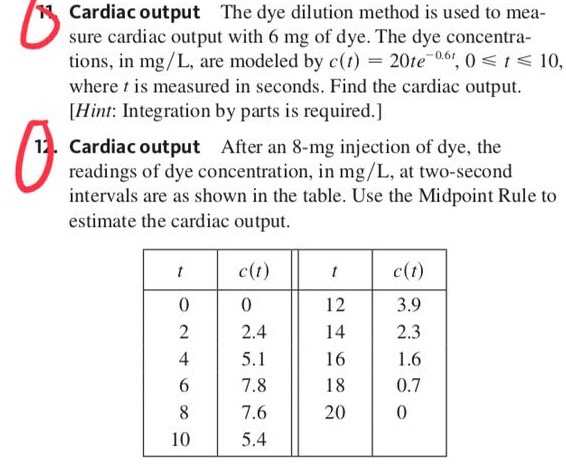The Ultimate Guide To Dye Dilution
Wiki Article
The Best Strategy To Use For Dye Dilution
Table of ContentsGetting The Dye Dilution To WorkThe Facts About Dye Dilution RevealedWhat Does Dye Dilution Mean?Dye Dilution Things To Know Before You BuySome Known Factual Statements About Dye Dilution How Dye Dilution can Save You Time, Stress, and Money.The 15-Second Trick For Dye Dilution

Tritiated water was initial explained by Speed et al. as an isotope for measuring TBW. The main advantage of using tritium (3H), the radioactive isotope of hydrogen, is that it is readily offered as well as easily appraised by scintillation checking. On the other hand, a large amount of tritiated water must be carried out to acquire appropriate precision, eliminating its use in cases where the usage of radionuclides is limited (Dye Dilution).
Greater technological errors have been discovered using the infrared method. When utilizing isotope dilution, particularly deuterated water, two body liquid examples from urine, blood, or saliva are collected: one prior to management of the deuterium dose to identify the natural history degrees and the 2nd after enabling adequate time for penetration of the isotope.
The 5-Second Trick For Dye Dilution
There are four standard assumptions that are intrinsic in any kind of isotope dilution technique. Tracer exchanges with nonaqueous molecules are very little, and consequently, the quantity of circulation or dilution space of the isotope can be figured out, albeit somewhat better than the water pool.
Still, it is necessary to think about voids after tracer management. Three spaces are advised after the dose when pee is used as the biological example. The tracer is not metabolized during the equilibration time. Body water remains in a constant state of change. In pleasant climates, the ordinary fractional turnover rate in grownups is 8% to 10% each day.
The 15-Second Trick For Dye Dilution
The inputs are balanced by an output of water in the type of urine, sweat, breath water, or transdermal dissipation. This consistent turn over has led to two approaches when evaluating TBW: the plateau technique as well as the back-extrapolation, or slope-intercept, technique. For body structure research study, the plateau method is the typical technique.This area is not a dish for your experiment. It clarifies some concepts for making dilutions that offer optimum outcomes. When you recognize these principles, you will certainly be better able to make the dilutions you need for each specific case. Typically in speculative job, you require to cover a variety of focus, so you require to make a lot of various dilutions.
You might assume it would be excellent to dilute 1/2, 1/3, 1/10, 1/100. There are 2 issues with this collection of dilutions. The dilutions are unnecessarily made complex to make.
Excitement About Dye Dilution

Serial dilutions are made by making the exact same dilution step over and also over, making use of the previous dilution as the input to the next dilution in each action. Because the dilution-fold is the very same in each action, the dilutions are a geometric collection (constant proportion between any type of surrounding dilutions). For instance: Notice that each dilution is three-fold relative to the previous one.
If that isn't enough variety, take into consideration a series of five-fold dilutions: Right here we've covered a (625/5) = 125-fold variety. No issue where the half-max drops in a collection of 5-fold dilutions, it is no even more than 2. 2-fold ("middle" [square origin] of a 5-fold step) far from a data factor-- so the protection of the array is Get More Information comprehensive and also even.
Dye Dilution for Beginners
This stays clear of bunching most of the points up at one end and having simply the last factor method much down the scale. Prior to making serial dilutions, you require to make rough price quotes of the concentrations in your unknowns, and also your unpredictability in those estimates. If A280 More Help states you have 7.That indicates you require to cover a ten-fold array of dilutions, or possibly a bit much more to be sure. If the half-max of your assay happens at about 0. 5 mg/ml, then your minimum dilution fold is (700 mg/ml)/(0.
To be secure, you could desire to cover 1,000 with 20,000. As a whole, before developing a dilution series, you need to make a decision: What are the most affordable and also highest possible focus (or dilutions) you need to test in order to be certain of locating the half-max? These identify the variety of the dilution series.
Dye Dilution Fundamentals Explained
You need to make a 1/1,000 dilution to start with. You require to serially thin down that 2-fold per step in 5 steps.Why is that a poor option? Because you can not determine 1 microliter (or perhaps 10 microliters) properly with regular more information pipeters. So, make 3 serial 1/10 dilutions (0. 1 ml [100 microliters] right into 0. 9 ml): 1/10 x 1/10 x 1/10 = 1/1,000. Now you can add 1. 0 ml of the starting 1/1,000 dilution to 1.
0 ml from that dilution (leaving 1. And so forth for 3 even more serial dilution actions (giving 1/8,000, 1/16,000, as well as 1/32,000). 0 ml of each dilution.
Facts About Dye Dilution Uncovered
The Cell, Trace Violet kit is used to keep an eye on distinctive generations of multiplying cells by color dilution. Real-time cells are covalently classified with a very bright, steady color. Every generation of cells looks like a various optimal on a circulation cytometry pie chart.Just the last plateau worth or C2, the downstream focus, must be recorded instead of a complete document of the passing cloud that is required with the salt-velocity-area approach. Due to the fact that the focused tracer remedy have to be contributed to the circulation at a continuous known rate, favorable variation metering pumps are needed for shot.
Report this wiki page